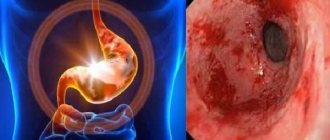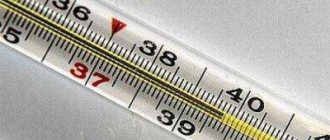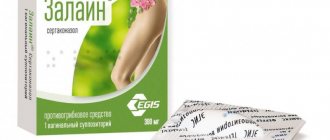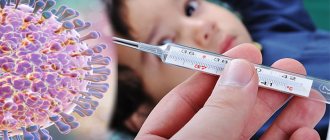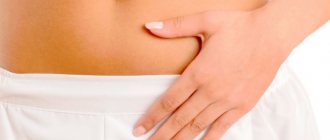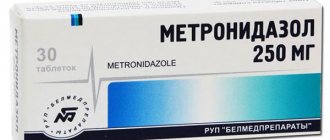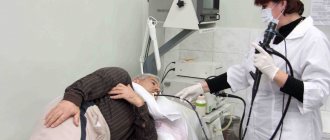Treatment of candidiasis
To successfully combat fungi and restore normal microflora, first of all, eliminate the cause of the development of thrush. The disease can be provoked by:
- weakened immune system;
- taking antibiotics, hormonal contraceptives;
- endocrine diseases: diabetes mellitus, thyrotoxicosis;
- menopause;
- use of low-quality gels for intimate hygiene;
- wearing synthetic underwear;
- chronic stress;
- bad habits;
- pregnancy;
- hormonal imbalance;
- injury to the mucous membranes of the vagina;
- chronic inflammatory diseases of internal organs;
- intestinal dysbiosis.
If you only treat the symptoms of thrush, the disease will constantly recur, become chronic, and can cause complications in the form of inflammation of the vagina. Therapy should be carried out comprehensively; to do this, the main cause that provoked the disease is determined and it is eliminated.
How long does it take to treat acute stage thrush that occurs for the first time? The course of treatment takes on average from 7 to 14 days, provided that all doctor’s recommendations are followed. It is necessary to take medications even after the disappearance of external manifestations of candidiasis. Most often, a mild form of the disease is treated with vaginal suppositories with antimycotics, immunomodulators and probiotics, which populate the vaginal mucosa with beneficial lactobacilli.
There are modern medications (Fluconazole) that promise to cure a woman of thrush in one day. For primary candidiasis, a single dose of an antimycotic capsule is sufficient; if the disease is recurrent, you will have to undergo a course of treatment lasting 6–12 months. Tablets are taken once a week or a month. The doctor selects the regimen individually for each patient.
How long it takes for thrush to go away in women with diabetes depends on how long it takes to normalize the concentration of glucose in the blood. Diseases of the thyroid gland require restoration of the level of thyroid hormones.
The chronic form of thrush can last several months; to eliminate the symptoms of the pathology, it is necessary to undergo a long course of treatment with antifungals, vaginal suppositories, and immunomodulators.
How to treat candidiasis?
Patients who are concerned about how long it takes for thrush to go away should contact their attending physician who knows the clinical picture of the disease and has information about the individual characteristics of the patient and possible complications during treatment. The standard treatment regimen for acute candidiasis is as follows:
- The use of broad-spectrum drugs to destroy fungal and bacterial flora. For this purpose, systemic or local agents can be used. In most cases, vaginal tablets and suppositories “Pimafucin” and “Terzhinan” become the drugs of choice. Flucostat capsules have a good therapeutic effect. In the absence of allergies and contraindications for use, the doctor may prescribe the broad-spectrum drug Fluconazole.
- Restoration of vaginal microflora . To normalize the acidic environment and vaginal flora, topical agents are used in the form of vaginal suppositories or creams (“Acilact”, “Bifidumbacterin”).
- Normalization of intestinal microflora (“Normobact”, “Yogulakt”, “Bifidumbacterin” powder and capsules).
- Eliminating the deficiency of nutrients and strengthening the immune system with the help of vitamin and mineral complexes (“Pikovit”, “Alphabet”, “Vitrum”).
In severe cases, as well as with frequently recurrent candidiasis, the doctor may recommend a course of immunomodulatory therapy with interferon drugs or agents with the addition of antioxidants. A good therapeutic effect is achieved by using Polyoxidonium, a licensed Russian drug with a pronounced immunomodulatory effect and high detoxification properties. The product is part of the Grippol vaccine, used to prevent various forms of influenza.
More interesting: History of candidiasis
It is difficult to say how many days it takes for a candidiasis infection to go away with this treatment, but usually the duration of therapy, provided all recommendations are followed, does not exceed 10 days. To increase the effectiveness of therapy and eliminate the possibility of infection of a partner, it is necessary to maintain sexual rest until the end of therapy and for another two weeks after recovery.
Duration of treatment for thrush in pregnant women
Treatment of candidiasis in expectant mothers is carried out with drugs that are not absorbed into the systemic bloodstream and do not violate the placental barrier, and therefore cannot harm the fetus. Most often, women are prescribed vaginal suppositories Pimafucin, Livarol. The drug Terzhinan is used starting from the 2nd trimester; in earlier stages, treatment is contraindicated.
How long it takes to treat thrush in women during pregnancy depends on the medications taken. On average, the course takes 3–7 days. Oral administration of antimycotics is prescribed in rare cases for emergency indications.
How long does it take to cure thrush?
The treatment period depends on the advanced stage of the disease. At the last stage, therapy lasts quite a long time and is accompanied by difficulties. Typically, doctors prescribe a woman a course of pills and determine the time of therapy themselves. It is important to continue treatment until the end of the prescribed course. Sometimes, after the symptoms disappear, women stop taking medications and think that they have fully recovered. This is a critical mistake, since thrush still remains in the body and can cause complications in other organs and systems.
Usually, the duration of therapy can be determined only after diagnosis and testing. The answer to the question about the treatment period should be given by the attending physician.
On average, if you start therapy at the earliest stage, then the thrush will completely go away in 4-7 days. In this case, you must strictly follow all the doctor’s recommendations. If the disease is at an advanced stage, then therapy lasts several weeks and more serious medications are used.
The doctor prescribes treatment methods that quickly increase immunity in a woman’s body and improve the entire microflora.
How long does it take to be treated with suppositories?
For local use, suppositories or vaginal tablets are prescribed. This method of treatment is indicated for primary infection and when there are no complications.
- Suppositories with Nystatin are inserted into the vagina after hygiene procedures 2 times a day. The course of treatment is 10–14 days.
- Clotrimazole suppositories are used once a day for 6 days.
- Polygynax vaginal capsules are used for treatment for 12 days, in order to prevent relapses of chronic thrush - for 6 days.
- Treatment with Pimafucin lasts 3–6 days.
- Klion-D is used 1 capsule per day for 10 days.
Suppositories suppress the proliferation of yeast fungi, do not change the composition of the vaginal microflora, and eliminate burning and itching. In addition to suppositories, local treatment of the genital organs with gels and creams Pimafucin, Clotrimazole, Nystatin is prescribed. Dermal ointments have an antifungal effect and relieve discomfort.
Duration of tablet therapy
How long does treatment last for chronic thrush? Recurrent candidiasis is treated with vaginal suppositories and oral tablets. The advantage of this therapy is the shorter duration of the course, but there is a risk of developing allergic reactions, side effects from the digestive tract, and liver.
List of antimycotics for the treatment of thrush:
- Miconazole is taken 1 tablet per day for 3 days.
- Diflucan is taken once in a dosage of 150 mg.
- Ketocanozole should be taken 1-2 times a day for 5 days in a row.
- Levorin is taken for 5 days for acute forms of thrush, and for 10 days for chronic cases.
A doctor should prescribe pills after confirming the diagnosis; self-medication can cause the development of side effects and complications. Most drugs are contraindicated for therapy during pregnancy. In how many days candidiasis will go away, the gynecologist will be able to tell, taking into account the individual characteristics of the woman and the severity of the disease.
Why does thrush begin or go away after menstruation?
Candida, like other opportunistic microorganisms, live in the body according to certain laws as long as the immune system controls the situation and does not allow the fungus to displace lactobacilli. At the slightest disruption in the functioning of the protective forces, active proliferation of the fungus occurs. Even a healthy female body on critical days, when hormonal levels decrease, turns out to be more vulnerable and unprotected from infection. This is one of the reasons that thrush after menstruation worsens in many women who have previously encountered yeast fungus. And yet this is not the only reason why thrush occurs, but quickly passes after menstruation.
If thrush begins after menstruation, its possible cause could be the use of pads and tampons during menstruation, which caused irritation of the skin. Those who are sensitive to fragrances will be particularly affected. If you do not change pads in a timely manner or use products that have poor absorbency, many microorganisms appear on the skin. In such an environment, Candida fungus multiplies quickly.
After menstruation, not everyone will get thrush without treatment. It depends on how strong the body is. For some, it goes away on its own, but it takes 3 to 5 days until the hormonal levels are restored, others get rid of it with the help of soda.
If candidiasis appears more than 4 times a year, this indicates a chronic disease. In such cases, you should not guess whether the thrush will go away after menstruation, but you should see a doctor who will conduct an examination. Since the fungus appears so often, we need to look for the cause. Most likely, it is necessary to stabilize the immune system. This may take some time, because it will not be possible to boost immunity with just regular vitamins and a balanced diet. Probiotics will be your best assistant in correcting the balance. This group of drugs contains bifidobacteria and lactobacilli, which are lacking in the body.
A set of hygienic, therapeutic and preventive procedures will allow you to forget about unpleasant discharge. Remember that in most cases, thrush does not go away after menstruation, but after proper treatment.
Home remedies for thrush treatment
At home, douching with a solution of baking soda and potassium permanganate helps get rid of thrush. The procedures are carried out 2 times a day for 7–10 days. This method has an antibacterial effect, helps relieve itching, burning and irritation of the genitals.
Of the many popular folk recipes, the introduction of tampons with honey and aloe vera juice is used. The bee product is a natural antioxidant and has antibacterial and antifungal properties. Aloe reduces swelling, irritation and redness of the mucous membranes. Tampons are used once a day for 10 days.
Home douching with decoctions of chamomile, oak bark or knotweed also helps get rid of thrush. Herbs have an anti-inflammatory, astringent effect, help restore normal microflora, and increase local immunity. The procedures are continued for 7–10 days, even if the symptoms disappeared earlier.
Treatment with folk remedies should be carried out after examination and consultation with a gynecologist, otherwise thrush may become chronic. Sometimes women mistake a sexually transmitted infectious disease for vaginal candidiasis, which threatens the development of complications, inflammation of the vagina, uterus, and appendages.
The average duration of treatment for thrush is 3–14 days. Severe forms of recurrent candidiasis require longer treatment in a comprehensive manner. Requires oral antimycotics and topical application of suppositories, gels or creams for 6–12 months.
Vulvovaginal candidiasis is a genital infection, the etiological factor of which is the activation of opportunistic vaginal microflora, namely yeast-like fungi from the genus Candida. When visiting a gynecologist, every woman is concerned with the question of how long thrush lasts and how long it will take to treat it.
As a rule, the presence of thrush can be confirmed by characteristic complaints and the appearance of the vaginal mucosa, as well as by microscopy of a smear taken during a gynecological examination. Therefore, the most important thing is to start therapy in a timely manner to avoid chronicity of the process or the development of complications.
Causes of thrush
The cause of vaginal candidiasis is not the fungi themselves, but the condition of the body as a whole, in which fungi multiply. A woman’s body contains special lactobacilli that inhibit the growth of fungi. But as soon as the natural balance of microflora in the vagina changes, intensive growth of microorganisms that cause thrush begins. In 5% of all cases, the disease recurs 4-5 times a year.
Microflora is disrupted when:
- weakened immunity;
- hormonal changes;
- the presence of other chronic diseases;
- past infectious diseases;
- premenstrual syndrome;
- prolonged stress;
- HIV;
- diabetes mellitus;
- pregnancy;
- bad habits;
- long-term treatment with antibiotics;
- poor nutrition;
- wearing wet or synthetic underwear;
- constant use of antibacterial gels (soaps);
- hypothermia;
- climate change;
- intestinal dysbiosis;
- poor hygiene;
- use of local contraceptives.
Weakening of the immune system can occur due to viral or infectious diseases. Antibacterial therapy has its drawbacks. It destroys both harmful microorganisms and beneficial ones. Therefore, thrush can appear as a side effect after taking antibiotics. Often pregnant women suffer from vaginal candidiasis due to hormonal changes. The risk of this pathology occurs in women who wear synthetic underwear.
For those who go on vacation to the sea, it is necessary to have more than 1 swimsuit. After bathing, wet ones should be removed immediately so as not to provoke the growth of bacteria. Women who have an active sex life with frequent changes of partners are at risk. Various other strains of bacteria enter the vagina during unprotected intercourse and disrupt the microflora.
Thrush can be caused by poor diet. Excessive consumption of sweets increases blood sugar levels and changes the acidity in the vagina. This creates a suitable environment for fungal growth. Some types of diets that are insufficient in vitamins and minerals can weaken the body's protective functions.
Candidiasis can be caused by the use of scented panty liners, colored scented toilet paper, antibacterial gels with various additives that wash away the protective layer.
How long does thrush last on average and what does it depend on?
When answering the question of how many days does thrush go away, it is impossible to give a definite answer, since it depends on a number of factors:
- The state of the body's immune system. Reduced reactivity is not only the leading factor in the occurrence of candidiasis, but also determines the duration of its course.
- The duration of the period from the moment of illness to the start of therapy. If treatment is prescribed 24-48 hours after the appearance of the first complaints and signs, then the likelihood of a speedy recovery is much higher than with late-started therapy.
- The state of the vaginal microflora. If the development of candidiasis occurs against the background of vaginal dysbiosis, then treatment only with antifungal drugs without the use of lactobacilli will aggravate the course of thrush and complicate recovery.
- Background chronic pathology. Quite often, genital candidiasis occurs in women suffering from diabetes, chronic inflammatory diseases of the reproductive system, toxic goiter or immunodeficiency. Therefore, the duration of thrush also depends on the degree of compensation of the concomitant disease.
- Adequacy of the selected therapy. It is important not just to use an antifungal drug, you need to choose exactly the one to which the seeded fungi are sensitive.
- Compliance with recommendations and appointments. In order to shorten the duration of the disease, a woman should follow all the advice of her doctor.
If we do not take into account the above factors, the average duration of the acute form of thrush is 7-10 days, while chronic candidiasis can affect the physical condition of a woman for much longer.
How is thrush treated?
How and how much to treat thrush is decided by the gynecologist. The doctor will select medications depending on the degree of damage to the genital organs. And this can only be established after examination and analysis. Improper treatment can cause microorganisms to become resistant to antibacterial therapy. Also, some diseases have symptoms similar to thrush.
For example, candidiasis often occurs against the background of genital herpes, chlamydia, ureaplasmosis, gonorrhea and trichomoniasis. Under such circumstances, treatment will be aimed at eliminating the mixed infection. With effective treatment, thrush lasts up to 5-7 days. Typically, a gynecologist prescribes suppositories, creams and tablets to suppress the growth of fungi. If the infection has penetrated deep into the vagina, douching with antiseptic solutions may be indicated.
In addition to drugs that suppress the growth of Candida fungi, probiotics are prescribed. These are drugs that will help restore the microflora not only of the vagina, but also of the intestines.
When treating thrush, it is recommended to take vitamins and tonic medications to increase the strength of the immune system.
During treatment you should refrain from eating sweets and yeast products. If you follow the doctor's recommendations, thrush goes away without a trace.
How much is usually treated in women and men with the right approach?
Again, the duration of therapy depends on the degree of activity of the process and the severity of clinical manifestations. If we compare how long it takes to treat thrush in women and men, then in the first case the average duration of use of antifungal agents is 7-10 days, in the second - usually 10-14 days.
Basically, a woman with newly diagnosed acute primary thrush is prescribed a single dose of a fluconazole-based antifungal systemic drug (Flucostat or Diflucan) at a dose of 150 mg and a 7-10-day course of vaginal antimycotic suppositories.
For example, according to the official instructions, local suppositories with Hexicon antiseptic must be used for 10 days, one or two pieces per day. Intravaginal suppositories Clotrimazole are used for 6 days to treat acute candidiasis.
It is also possible for men to take Fluconazole once for systemic antifungal action. However, the standard course of treatment is as follows: two weeks of taking Nystatin tablets and local use of an antifungal ointment that is active against yeast-like fungi (Sebozol for 14 days or Miconazole for 14-21 days). It is important to treat not only the affected areas, but also the surrounding healthy skin.
The chronic form of thrush implies longer use of antifungal medications. For example, Flucostat is prescribed as follows: take one capsule every 4 weeks for 6-12 months. If vaginal tablets called Terzhinan are used, then the duration of therapy is not 10 (as in acute cases), but 20 days of daily use.
Do not forget about the diet, since thrush treatment necessarily includes a diet with the exception of quickly digestible carbohydrates. At the time of treatment, soaps and hygiene products with fragrances are not used. Sexual contact should be avoided while the thrush is being treated for several days.
Also, with a competent approach, the gynecologist will definitely prescribe a course of immunomodulators, vitamins and lactobacilli, which normalize the vaginal biocenosis. Typically, such complex therapy lasts 4-6 weeks.
When will thrush go away after treatment?
Have you been fighting thrush for many years without success?
Head of the Institute: “You will be amazed at how easy it is to cure thrush by taking it every day...
Read more "
05/04/2015 // admin
When the first signs of thrush appear, you should immediately go to the doctor. Despite the fact that the disease is not a dangerous disease, it requires the right treatment approach. After all, otherwise, it will be possible to wait for candidiasis to turn from an acute form into a chronic form. When a doctor prescribes treatment, many people wonder how long it will take for thrush to go away.
If you experience acute first symptoms of thrush, your doctor will prescribe a comprehensive treatment. It includes a single dose of a general action tablet, as well as vaginal suppositories (creams or ointments, if candidiasis is treated in men). The time it takes for the disease to pass varies, but on average it takes 1-2 weeks.
About complex therapy
As a rule, for the treatment of vaginal candidiasis or this disease in men, the doctor prescribes a mandatory one-time dose of the “Diflazon” tablet (other names “Difluzol”, “Flyuzak”, “Futsi”). In the normal course of thrush, it is enough to take one tablet at a dose of 150 mg, but in advanced forms treatment is required for three days. This is general therapy, but it alone will not allow you to determine how long it will take for thrush to go away.
Local treatment plays a particularly important role. It lies in the fact that the drug is directly applied to the mucous membrane and affects the pathogenic environment. In particular, women are prescribed vaginal suppositories, and men are prescribed ointment or cream. This therapy lasts up to ten days. By the end of therapy, the thrush should go away. That is, the total time it takes for thrush to go away takes an average of two weeks. Do you know whether sexual activity is allowed if you have thrush?
If candidiasis does not go away
Most often, symptoms of candidiasis disappear within two weeks of treatment. Even with a chronic course of the disease, remission occurs. But sometimes the period for how long the thrush goes away is not respected, and after the end of the course of treatment, the inflammatory process with all its symptoms is still observed. What could be causing this?
Weak immune system
Moreover, this may not concern the general immune system of the body, but the local one. For example, vaginal protective factors are weakened. In such a situation, thrush will not go away on its own, so additional measures will need to be taken to treat it.
Wrong therapy
If you use only local remedies for treatment, even popular folk methods for treating thrush, then you will not be able to get rid of thrush completely. It is also important to take medications that are well absorbed from the gastrointestinal tract, providing an overall healing effect. Sometimes patients take the medicine for less time than the doctor prescribed. This may also be the reason why thrush does not go away after two weeks of treatment. Also in this group of reasons are cessation of therapy and lack of preventive measures.
Pathogen resistance
Antifungal drugs are prescribed by a doctor, usually with a general spectrum of action. In 90% of cases, they hit the target, but sometimes the disease is caused by other types of Candida fungus, which conventional drugs cannot kill.
Vaginal hypersensitivity
There is no need to explain anything here. This is a kind of allergic reaction, which explains why the time it takes for thrush to go away increases. Here you will need to undergo additional examination and be under constant supervision. Do you know why thrush appears in a nursing mother?
Self-medication
In all articles on our website, we emphasize that treatment should only be prescribed by a doctor. Regardless of whether traditional or traditional medicine methods are considered. Self-medication will only lead to aggravation of the disease and the transition of acute thrush to its chronic form.
If the thrush does not go away after two weeks of treatment with the drugs prescribed by the doctor, then it is necessary to undergo a re-examination. It will help identify the cause of unsuccessful treatment and adjust the entire course in order to ultimately achieve recovery or simply a long period of remission.
How many days will it take for candidiasis to go away if left untreated?
You can find many questions online about how long it takes for thrush to go away without treatment. You should not rely on self-treatment of the disease, because in the absence of proper therapy, elimination of the pathogen simply will not happen.
After some time, the vivid symptoms of candidiasis may fade, but most likely the disease will become chronic, which is fraught with frequent relapses and complications, including infertility.
In chronic thrush, fungi constantly persist in the vaginal cavity and, as a rule, are completely or partially resistant to prescribed antifungal drugs. Also, do not forget that any chronic inflammation leads to dysplasia and subsequent metaplasia of the epithelium, which is considered a precancerous condition and, when combined, can lead to oncology.
Acute thrush is not a dangerous, but rather unpleasant disease, which is accompanied by a number of painful symptoms. Timely treatment will allow you to quickly destroy pathogenic fungi and remove them from the body.
Thrush, or candidiasis, is an unpleasant fungal disease. Every second woman encounters it. If the disease appears, the first thing that worries you is the question: how long does it take to treat thrush in women? Some women believe that this is a simple disease and there is no need to treat it; it will go away on its own. But they are wrong. Early stage thrush can be cured within a few days. If the disease is neglected, treatment can last for years.
How to speed up the process?
How long it takes to treat thrush in women is of interest to many representatives of the fair sex. Do not forget that each organism is individual, so the time period for treatment may vary. In order to cure the disease as soon as possible, it is very important to find an integrated approach. Only comprehensive measures can significantly speed up the result. What should patients do for a quick cure:
- First of all, it is very important to take the medications prescribed by your doctor. These can be oral tablets, as well as suppositories and ointments.
- It is also very important to increase the protective functions of your body. To do this, it is very important to provide your body with the nutrients and vitamins it needs. Doctors very often prescribe additional vitamin complexes and dietary supplements to their patients.
- During treatment, it is very important to avoid excessive consumption of sweet and flour products, as well as chocolate products.
- Engage in restoring healthy microflora. To do this, regularly drink dairy products that contain microorganisms beneficial to our body.
Clinical picture and treatment of thrush
Candidiasis has an incubation period from one day to three weeks, then the acute phase of the disease begins with characteristic symptoms:
- Vaginal discharge is mucous with white lumps.
- Sourish smell of discharge.
- Itching of the affected areas.
- Burning sensation.
- Painful sensations when urinating.
- Discomfort during intimacy.
Early symptoms appear one at a time. As the disease worsens, their number and intensity increases. You can determine the presence of a fungal infection yourself using pharmacy tests and by contacting a gynecologist. At the clinic, they take a smear and determine the type of fungus, its quantity and drug resistance.
Treatment should begin at the first manifestations. To get rid of candidiasis, a set of therapeutic measures is taken:
- taking local antifungal drugs (vaginal suppositories, capsules and tablets, ointments);
- douching with special solutions;
- taking antifungal agents orally (prescribed for severe cases);
- diet.
If you use only one method, the treatment will be incomplete and its duration will be delayed.
Stages of the incubation period
All infectious diseases have an incubation period. The incubation period of thrush is the period of time from the moment of infection or activation of microorganisms until the first manifestations, when the fungus attaches to the vaginal mucosa with further reproduction. In this case, the Candida fungus penetrates the mucous membrane only 5 millimeters, without affecting the thickness of the tissue. But this is enough to cause a woman great discomfort.
The incubation period of thrush is divided into 4 stages.
The first stage is adhesion, which means attachment. At this stage, the fungus attaches to its future “place of residence.” But to fix it, there must be an optimal environment, which the woman herself sometimes provides with incorrect behavior.
The second stage begins with the colonization of fungi on the mucous membrane. But if the immune system is strong, then it controls the reproduction of the pathogen. And although it exists, there are no symptoms. As soon as the protective functions are weakened, the fungus can become active and multiply very quickly. In this case, the thrush takes on a superficial form.
If left untreated, the infection will progress to the next, third stage, which occurs when the fungus penetrates deeper.
The fourth stage is characterized by the entry of microorganisms into the bloodstream, spread through the circulatory system and multiple damage to other organs. But this happens only in the most severe cases. Typically, thrush affects only the superficial layers of the mucous membrane and is treatable.
Timing of treatment for candidiasis
Sometimes candidiasis can be cured in 3-4 days. How long it takes for a woman to treat thrush depends on individual characteristics.
- Age. In women after menopause, the symptoms of thrush (discharge and odor) are less pronounced. The disease is not diagnosed on time and can become chronic.
- Hormonal background. The concentration of hormones in the blood significantly affects the health of the genital organs, the manifestation of thrush symptoms and the timing of treatment.
- Immunity. If the immune system is weakened, treatment is delayed. Additionally, vitamins and immunostimulating agents are prescribed.
- The state of the microflora of the vaginal mucosa.
- Resistance of fungal pathogens to drugs. This parameter is determined in the clinic.
If you do not seek help from a doctor at the first manifestations of candidiasis, the disease can develop. Thrush after 10-20 days without proper therapy becomes chronic. Chronic thrush is difficult to treat; relapses can occur four times a year. Depending on individual characteristics, chronic candidiasis is treated for 2-5 years.
How long does the disease last without treatment?
Very often you can observe a picture when a woman does not take any measures to treat candidiasis, and after a few days all the symptoms of the disease go away on their own. This usually occurs 7-10 days after the appearance of the first clinical signs. The woman believes that she has recovered and does not go to the hospital for examination.
This is a very serious mistake, since the activity of the fungal flora does not go away on its own, and the pathology simply becomes chronic with constant periods of exacerbation. It is possible to say how long it will take to treat advanced thrush only after examination. You need to immediately prepare for the fact that the therapy will be long and, most likely, will take several months. The period of active treatment ranges from 1 week to 30 days, the rest of the time the patient will be prescribed maintenance therapy, which includes several areas:
- destruction of the main causative agent of infection (fungus Candida albicans);
- combating additional infections if they are detected during the study of biological material;
- restoration of immune system functions by taking multivitamin complexes, mineral supplements and immunomodulators;
- normalization of intestinal microflora and the bacterial environment of the vagina;
- symptomatic therapy using antipruritic drugs.
More interesting: Candidiasis infection
How much to treat thrush in women and men is determined by the attending physician after examining the patient and studying the test results. If the disease has become chronic, treatment will be longer compared to the treatment of acute candidiasis.
Modern therapy of candidiasis
Patients with an acute course of the disease are prescribed an intensive course of therapy. Modern clinics have procedures that increase the effectiveness of drug treatment:
- sanitation of the cervical canal (vacuum);
- vaginal sanitation (ultrasonic)
- mud thermal applications;
- thermal irrigation with sanitizing solutions;
- Magnetophoresis with drugs.
Physiotherapy is aimed at normalizing the microflora of the vaginal mucosa and relieving symptoms. In acute cases, procedures are done daily. For advanced thrush, they are repeated once a week. The cost of the procedures is quite high.
A course of taking medications for thrush
To effectively treat thrush, you need to undergo a full course of drug treatment. The most commonly prescribed drugs for topical use are:
- Zalain (candles);
- Clotrimazole (suppositories, cream);
- Pimafucin (cream);
- Livarol (suppositories).
The most convenient form of medication for thrush is suppositories. The average course of treatment is two or three weeks. Creams are applied to the affected areas up to four times a day. Suppositories are inserted into the vagina at night.
Douching, means and timing
Douching and washing are aimed at reducing the symptoms of inflammation. The procedure is carried out with a solution of soda, chlorhexidine or herbal decoctions of St. John's wort or chamomile. Douching is done for 10 days. It speeds up the process of treating candidiasis.
Rubber bulbs are used for the procedure. It is filled with a warm soda solution or herbal tincture. The end of the bulb is carefully inserted into the vagina and lightly pressing inside releases the liquid. You should try to keep the solution in the vagina longer. After the procedure, the tip must be washed well and treated with potassium permanganate.
Proper nutrition when treating candidiasis
The diet complements drug treatment and allows you to quickly get rid of thrush. You need to follow the rules of nutrition throughout the entire course of taking the medications and for several weeks after the end of treatment. This will prevent the disease from recurring. Diet for candidiasis: Fermented milk products (kefir, starter cultures, yoghurts without sugar and fruit fillings). Bacterial cultures will become competitors for pathogenic fungi.
- Vegetables, herbs and unsweetened fruits. Plant foods are rich in vitamins. They help boost overall immunity.
- Vegetable oils (olive, sunflower, flaxseed, sea buckthorn). The oils are rich in unsaturated fatty acids and vitamin E.
- You should not consume sweets and flour, fruit juices and nectars, beer and alcohol. Fungi eat sweets. Increasing blood glucose levels will create a favorable environment for their reproduction.
- The diet will help boost immunity and improve the overall health of the body. It will be easier for him to fight the infection.

